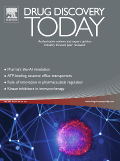
“The endocannabinoid system has been implicated in the modulation of adult neurogenesis.
Here, we describe the effect of type 1 cannabinoid receptor (CB1R) activation on self-renewal, proliferation and neuronal differentiation in mouse neonatal subventricular zone (SVZ) stem/progenitor cell cultures.
There is an emerging consensus that endocannabinoid signaling plays a major role in adult neurogenesis.
Cannabinoids act on at least two types of receptors, the type 1 and type 2 cannabinoid receptors (CB1R and CB2R), which are, respectively, predominantly distributed in the central nervous system (CNS) and immune system, although some studies have described the presence of low levels of CB2R in the brain.
Taken together, these results demonstrate that CB1R activation induces proliferation, self-renewal and neuronal differentiation from mouse neonatal SVZ cell cultures.









